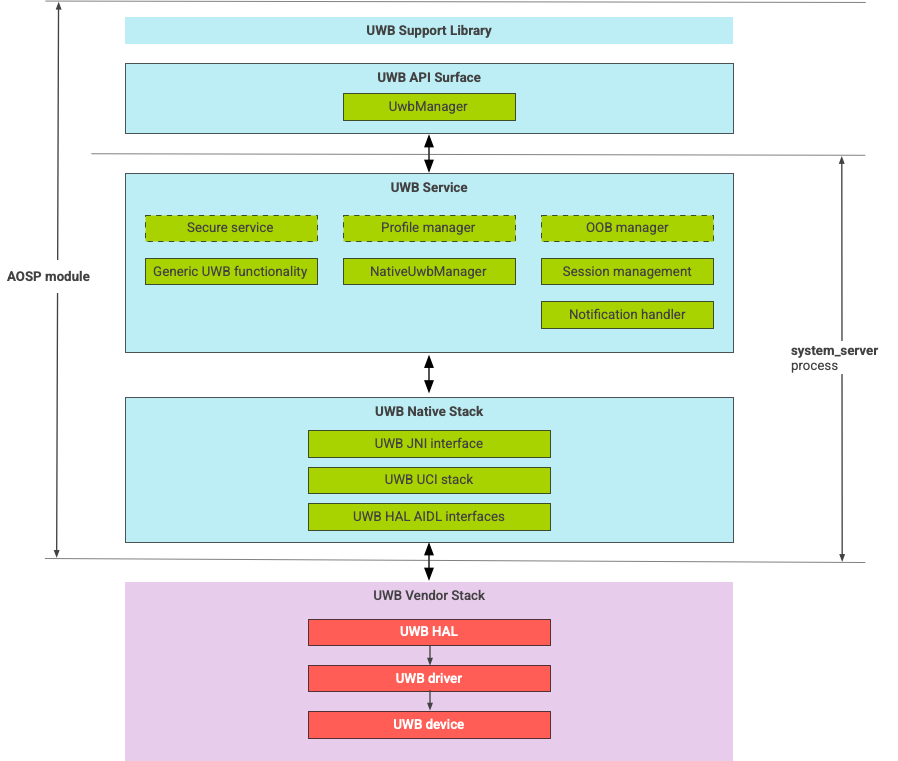Android 13 推出的超寬頻 (UWB) 模組包含 HAL 介面上的 UWB 堆疊,以 FiRa 規格為基礎。
UWB 模組可為裝置製造商帶來下列優勢:
- 適用於支援 UWB 的裝置,提供完整的 Android 原生 UWB 堆疊
- 提升 Android 生態系統中 UWB 的品質和互通性
- 更快速且彈性地支援新的 FiRa 用途和規格更新
詳細說明
以下是 UWB 模組的詳細資料:
- Android 13 的 AOSP 中包含完整的 UWB 堆疊,使用 FiRa 定義的 UCI 規格做為 HAL 介面。
- 允許系統應用程式佈建自訂設定檔。
- 包含系統 API 介面,可讓系統應用程式在測距工作階段中使用自訂設定檔。
- 包括基礎架構,可公開 RRO,供裝置製造商自訂堆疊行為。
UWB 堆疊架構
UWB 堆疊包含 UWB 主線模組,以及 UWB 晶片供應商提供的 HAL 實作。

圖 1. UWB 堆疊架構
模組邊界
模組程式碼位於下列位置:
UWB Mainline Apex:
com.android.uwbUWB API 介面 (Java)
- 代碼位置:
packages/modules/Uwb/framework - 程序:
<bootclasspath>
- 代碼位置:
UwbService (Java)
- 代碼位置:
packages/modules/Uwb/service - 程序:
system_server
- 代碼位置:
Uwb Native 堆疊 (C++/Rust)
- 代碼位置:
external/uwb - 程序:
system_server
- 代碼位置:
HAL 介面和實作項目 (C++)
- 介面代碼位置:
hardware/interfaces/uwb - 導入程式碼位置:
vendor/<vendor-name>/uwb - 程序:
<vendor defined>
- 介面代碼位置:
套件格式
UWB 模組 (com.google.android.uwb) 使用 APEX 格式。
依附元件
UWB 主線模組依附於下列項目:
- UWB 晶片供應商提供的 HAL 實作。
- 所有 OOB 互動的藍牙堆疊。
- 所有安全服務互動的安全元素。
- 強制執行 UWB 執行階段權限的核心架構。

